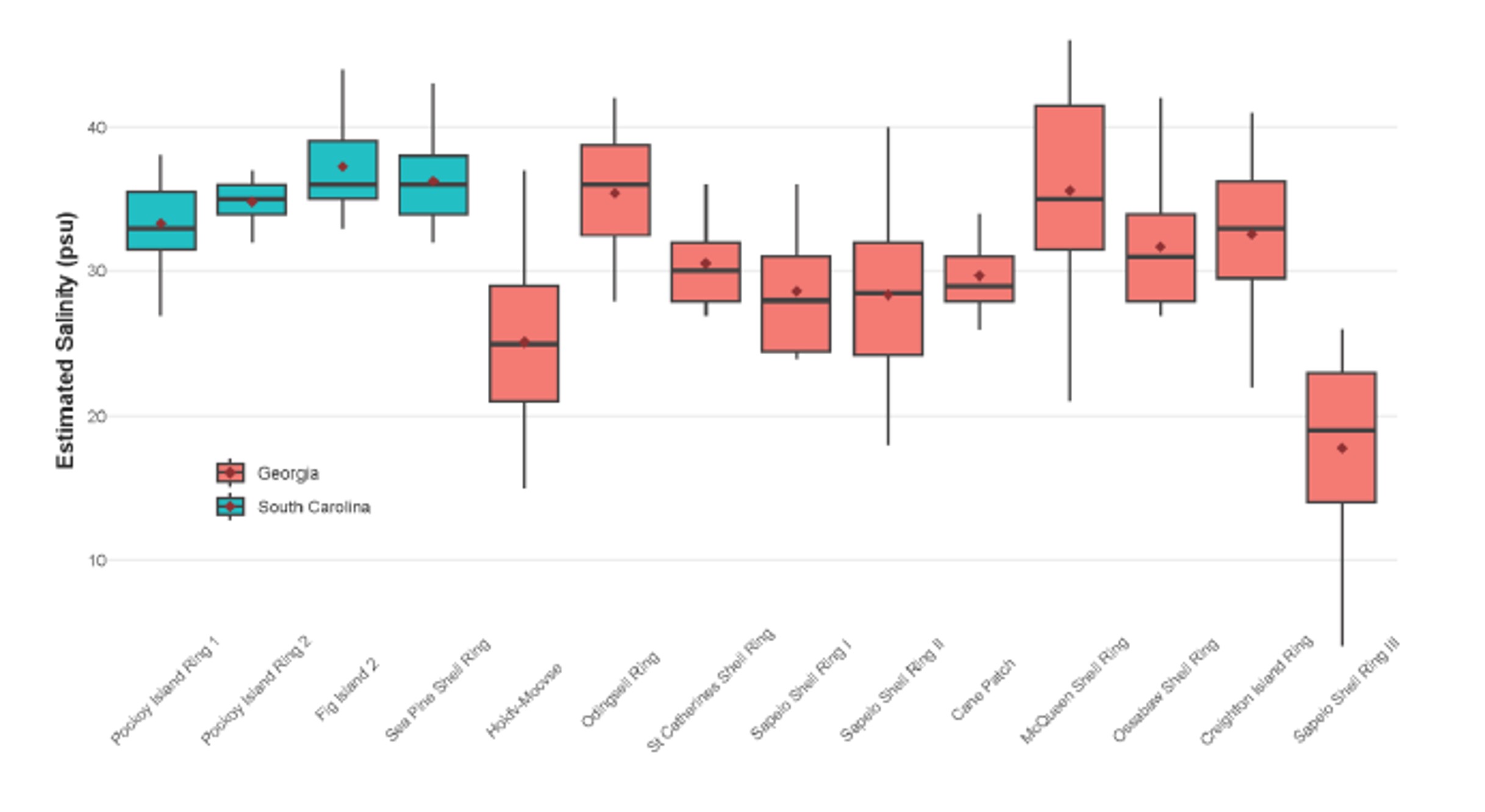GCE IV - Key Finding in 2023
Shellfish as Signposts: Insights from archaeology
Archaeological studies can provide a rich and deep context for identifying historic legacies and characterizing the changing relationships between humans and the environment. In recent years, GCE PI Victor Thompson and his lab have conducted a series of studies that focused on oysters and what they can tell us about Indigenous settlements, harvesting practices, and sea level rise. In a new study (Garland et al. in review), they used stable isotopes to infer that oyster reef fisheries developed around 5000 years ago, which is about 500 years earlier than previously thought. A compilation of size and abundance of ~40,000 shells collected along the Atlantic Coast provides a long-term record that demonstrates that the ecosystem supported rich harvestable resources for large populations until the late 1800s (Thompson et al. 2020), and that Native shellfish harvesting practices were sustainable (Garland and Thompson 2023). These insights were part of a larger study with scholars from the U.S. West coast and Australia that suggested that, globally, colonization plays a greater role in oyster decline than does Indigenous harvests (Reeder-Meyers et al. 2022). However, sea level modeling and isotope geochemistry suggest that the growth and decline of Native American villages are associated with the rising and lowering of salinity (Fig. 1) associated with changes in sea level, which affected the productivity of the shellfish fishery and caused regional shifts in village locations and permanence over time (Thompson et al. in review). Thus, historic changes in sea level can be tied to both ecosystem productivity and human settlement patterns. This speaks to the complex relationship that humans have with their environment. Finally, these insights can also inform as to which regions of the coast, and GCE domain specifically, where oyster reef restoration might be most productive as indicated by their long-term histories (see also Thompson et al. 2020).
Fig. 1 Box plots showing range of salinity values estimated from shell isotopic measurements (d18O) in Native American villages, providing evidence for fluctuations in their environment. Source: Thompson et al., sub.


